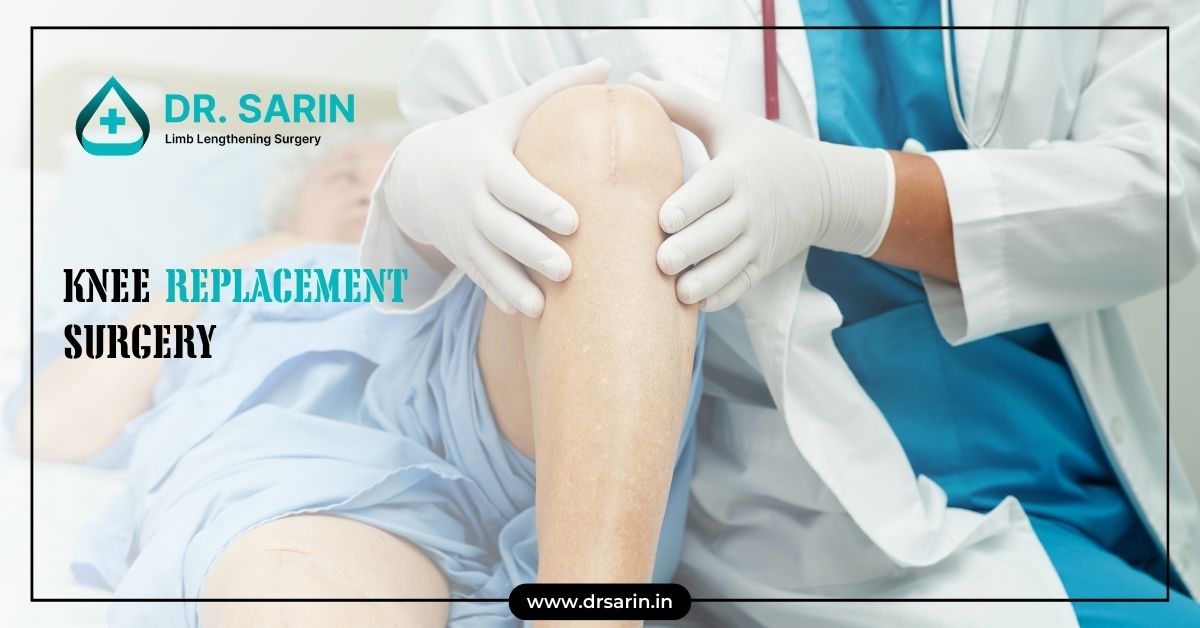Knee replacement surgery, also known as knee arthroplasty, is a common medical procedure designed to replace the weight-bearing surfaces of the knee joint to relieve pain and disability. It is often recommended for patients suffering from severe knee arthritis, particularly osteoarthritis, rheumatoid arthritis, or post-traumatic arthritis. During the surgery, the damaged or worn-out parts of the knee are removed and replaced with artificial components made of metal and plastic. The aim is to restore the function of the knee, improve mobility, and reduce pain, enabling patients to return to their daily activities with greater ease.
This surgery has become increasingly popular and effective over the years, with advancements in surgical techniques and implant technology contributing to better outcomes and quicker recovery times. However, as with any major surgical procedure, it’s essential for patients to understand the reasons behind the surgery, the potential risks, how to prepare, and what to expect during and after the procedure.
Why It’s Done
Knee surgery is primarily done to relieve severe pain and disability caused by damaged knee joints. It is often considered when other treatments such as medication, physical therapy, or less invasive surgeries have failed to provide adequate relief. The most common reasons for needing knee replacement surgery include:
Osteoarthritis: A degenerative joint disease that typically affects older adults, leading to the breakdown of joint cartilage and underlying bone.
Rheumatoid Arthritis: An autoimmune condition that causes chronic inflammation in the joints, leading to pain and joint damage.
Post-Traumatic Arthritis: Arthritis that occurs after a serious knee injury, which may result in long-term damage to the knee joint.
Knee Deformities: Conditions like bowed legs or knock knees that can lead to uneven pressure on the knee joint, causing wear and tear over time.
Total Knee Replacement is usually recommended when the pain becomes so severe that it interferes with daily activities such as walking, climbing stairs, or even sitting and standing. The surgery can significantly improve the quality of life for those who suffer from chronic knee pain and limited mobility.
Risks
While knee replacement surgery is generally safe, it does carry some risks, as with any major surgery. Understanding these risks is crucial for making an informed decision. Some of the potential risks include:
Infection: Although rare, infections can occur at the surgical site or within the knee joint. This may require additional treatment or even a second surgery.
Blood Clots: After surgery, there is a risk of developing blood clots in the veins of the legs, which can be dangerous if they travel to the lungs.
Implant Problems: Over time, the artificial knee joint may wear out, loosen, or dislocate, potentially requiring revision surgery.
Nerve Damage: There is a small risk of damage to the nerves surrounding the knee, which can lead to numbness, tingling, or weakness.
Stiffness: Some patients may experience stiffness in the knee after surgery, which can limit mobility.
It’s important to discuss these risks with your surgeon and weigh them against the potential benefits of the surgery.
How You Prepare
Proper preparation before knee surgery can significantly impact the success of the procedure and your recovery. Here are some steps to take:
Medical Evaluation: Your doctor will conduct a thorough medical evaluation, including blood tests, imaging studies, and a review of your medical history.
Pre-Surgery Exercises: Engaging in strengthening exercises for the knee and surrounding muscles can help improve your recovery.
Home Preparation: Arrange your home to accommodate your post-surgery needs. This may include installing safety bars, securing a comfortable place to rest, and preparing for limited mobility.
Medications: Discuss your current medications with your doctor, as some may need to be adjusted or stopped before surgery.
What You Can Expect
During the Procedure
Knee replacement surgery typically takes one to two hours. You will be given anesthesia to ensure you are comfortable throughout the procedure. The surgeon will make an incision over the knee to access the joint, remove the damaged bone and cartilage, and then replace them with the artificial joint components. The new knee joint will be tested for proper alignment and function before the incision is closed.
After the Procedure
After surgery, you will be taken to a recovery room where your vital signs will be closely monitored. Pain management is an essential part of the recovery process, and you will be given medications to control pain. Physical therapy will begin as soon as possible, often within 24 hours after surgery. The goal is to gradually restore movement and strengthen the muscles around the new joint.
Most patients stay in the hospital for a few days before being discharged to continue their recovery at home or in a rehabilitation facility. Full recovery can take several weeks to months, depending on your overall health and adherence to the prescribed rehabilitation plan.




